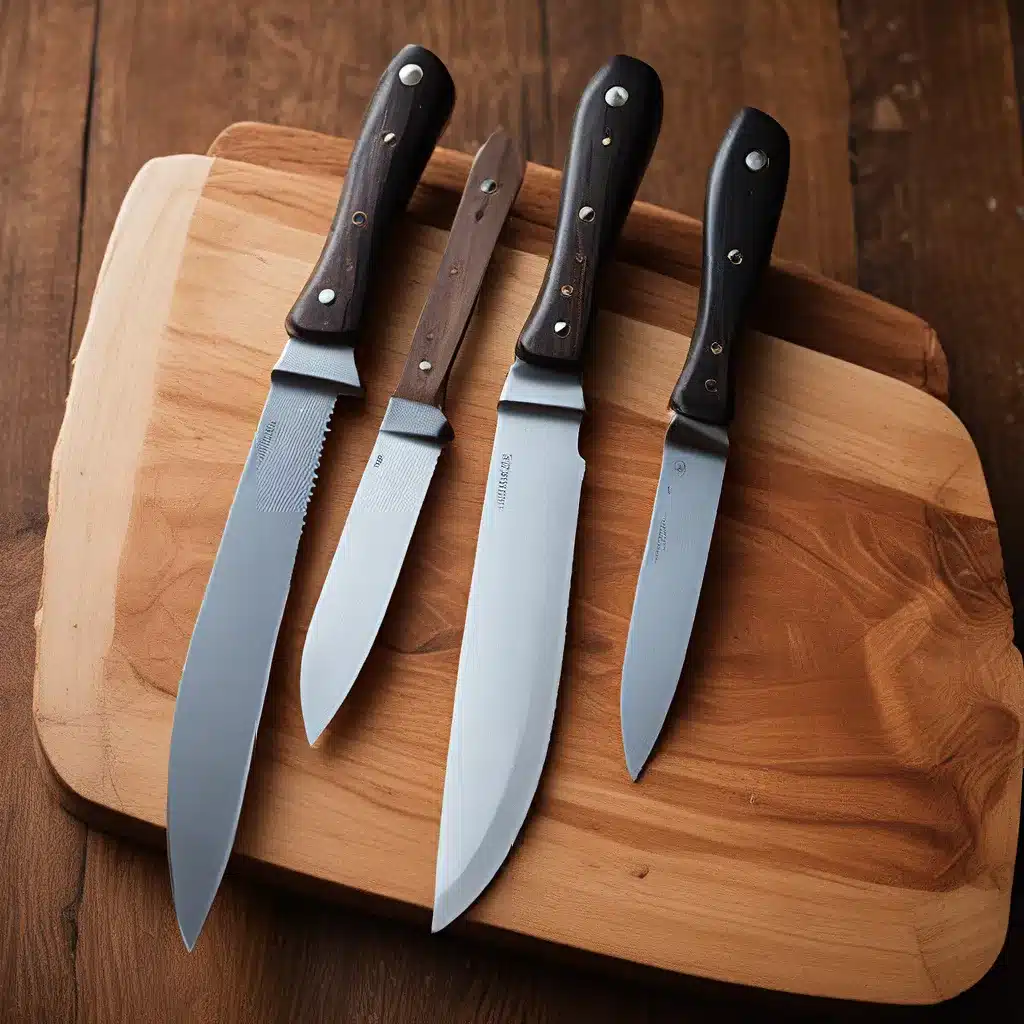
As a self-proclaimed culinary enthusiast, I’ll let you in on a little secret: the true heart and soul of any dish lies not in the fancy ingredients or the intricate techniques, but in the knife you use to prepare it. After all, a master chef is only as good as the tools at their disposal. And when it comes to those trusty blades, proper care and maintenance are the keys to unlocking their full potential.
In this comprehensive guide, we’ll dive deep into the world of knife care, exploring the essential techniques and best practices that will help you keep your culinary companions in tip-top shape, slicing and dicing with precision and ease. So, sharpen your senses and get ready to become the ultimate knife connoisseur!
The Anatomy of a Knife: Understanding the Essentials
Before we delve into the nitty-gritty of knife care, it’s important to have a solid understanding of the various components that make up a knife. After all, how can you properly maintain something if you don’t know how it works?
At the heart of every knife lies the blade, the sharp, metal edge that does the heavy lifting in the kitchen. The blade is typically made of high-carbon steel, which gives it the strength and durability to withstand the rigors of everyday use. Surrounding the blade is the handle, which provides a comfortable and secure grip for the user.
But that’s not all! The tang is the portion of the blade that extends into the handle, providing stability and balance to the knife. And let’s not forget the bolster, the thick section where the blade and handle meet, which helps to protect your fingers and add a touch of heft to the overall tool.
Keeping Your Knives Sharp: The Art of Honing and Sharpening
Now that we’ve got the basics down, let’s talk about the most crucial aspect of knife care: sharpening. After all, what good is a knife if it can’t cut through a ripe tomato with ease?
The key to maintaining a razor-sharp edge lies in a two-step process: honing and sharpening. Honing, often done with a steel rod, helps to realign the blade’s edge, while sharpening, typically done with a whetstone or electric sharpener, actually removes tiny amounts of metal to restore the blade’s cutting power.
As the experts on the eGullet forums advise, it’s important to find the right sharpening angle for your knife, usually between 15 and 20 degrees, and to use consistent, even strokes to maintain a consistent edge. And remember, sharpening is an art, not a science, so it may take some practice to get it just right.
Cleaning and Storing: Protecting Your Knives for the Long Haul
But sharpness is only half the battle – to keep your knives in pristine condition, you also need to focus on proper cleaning and storage.
After each use, it’s crucial to wash your knives by hand using warm, soapy water and a soft cloth or sponge. Avoid tossing them in the dishwasher, as the high heat and harsh detergents can damage the blades and handles over time. And never let your knives air dry; instead, gently pat them dry with a clean towel to prevent the formation of unsightly rust spots.
When it comes to storage, as the experts at Medium suggest, it’s best to keep your knives in a dedicated knife block or a secure, padded drawer. This not only protects the blades but also keeps them out of harm’s way, preventing accidental cuts and nicks.
Specialized Care: Maintaining the Unique Features of Your Knives
Of course, not all knives are created equal, and some may require a bit of specialized care to keep them in top condition.
Take, for example, carbon steel knives. These blades are renowned for their exceptional sharpness, but they’re also more prone to rusting and discoloration. To keep them looking their best, you’ll need to dry them thoroughly after each use and occasionally treat them with a thin coat of food-grade mineral oil.
On the other hand, ceramic knives are known for their incredible durability and resistance to corrosion, but they require a gentler touch. As the experts at Sharpen Up 365 advise, you should never use a metal sharpener on a ceramic blade, as it can easily chip or crack the delicate material.
And let’s not forget about those serrated knives. While they may not need sharpening as often as their straight-edged counterparts, they do require a bit of special attention. When honing a serrated knife, be sure to use a specialized serrated knife sharpener to maintain the unique, jagged edge.
The Herman Knives Advantage: Crafting Culinary Companions Built to Last
Now, you might be wondering, “Where can I find the perfect knives to put all of this knife care knowledge into practice?” Well, look no further than Herman Knives, a company that has been crafting high-quality, precision-engineered blades for discerning chefs and home cooks alike.
With a focus on using only the finest materials and employing time-honored craftsmanship, the team at Herman Knives has created a line of culinary companions that are not only a joy to use but also built to withstand the rigors of everyday kitchen life. And with a lifetime warranty on all their products, you can rest assured that your investment in a Herman knife will pay dividends for years to come.
Conclusion: Embrace the Artistry of Knife Care
In the end, the true joy of cooking lies not just in the final dish, but in the journey of preparing it. And at the heart of that journey are your trusty knives – the tools that transform raw ingredients into culinary masterpieces.
By mastering the art of knife care, you’ll not only keep your blades in top-notch condition, but you’ll also unlock a whole new level of culinary creativity and confidence. So, embrace the challenge, sharpen your skills, and get ready to elevate your cooking game to new heights!


